Thomas Carlyle had said once, 'Thou fool! Nature alone is antique, and the oldest art a mushroom; the idle crag thou sittest on is six thousand years of age.' Isn't it a fact that we haven't yet grown big enough to realize the benevolence of nature that has long been arming us to the teeth against all odds?
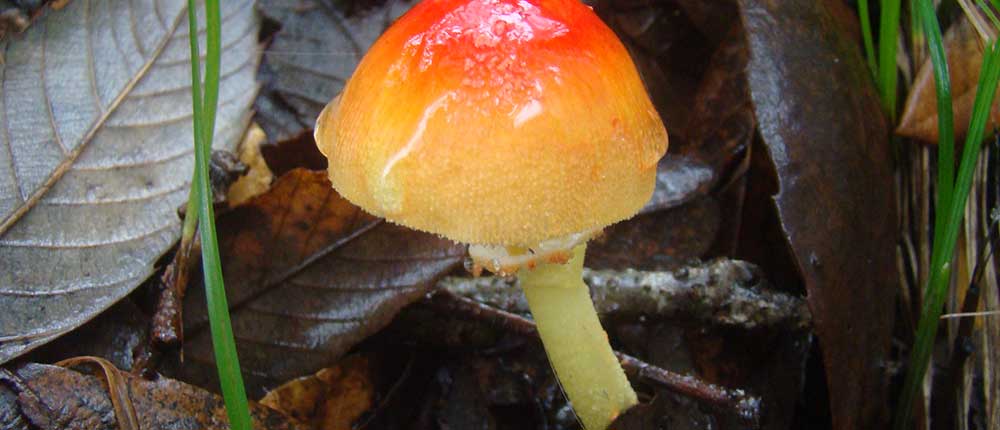
The emergence of mushrooms from the soil and a plant-like sedentary growth that they have, along with the accreditations of her times may have mistakenly earned from Emily Dickenson—a nineteenth century Amherst Poet—the title of 'plant' for mushrooms, which they are essentially not. They do not have chlorophyll and they obtain their nutrition from metabolizing non-living organic matter. In scientific classification, they belong to the group called saprophytes. A number of capped mushrooms having an elfin appearance contributing to the traditional images of elves, dwarves and leprechauns, etc., have been instrumental in triggering curiosity among a large number of artists, like the fifteenth century Dutch painter Hieronymus Bosh of The Garden of Earthly Delights fame to Siana Gavin, the London-based visual artist of our times. Emily Dickenson of course was no exception. Several other literati have also made mushrooms a subject of their writings. Mushrooms do have a long history in magic and folklore too. Fly agaric (Amanita muscaria) introduced to Southern Hemisphere somewhat unintentionally as a symbiont with pine and birch plantation had been well known in several ancient cultures and civilizations for its hallucinogenic properties. Mushroom stones discovered from the sites of Mayan civilization, the poisoning of Claudius—the predecessor of infamous Nero, and several shamanistic rituals associated with mushrooms the world over, allude towards the sense of wonder with which mushrooms were looked at in the ancient world. Interestingly, R Gordon Wasson, an American author and ethno-mycologist had even proposed that the 'Soma' talked about in the Rig Veda, was actually the extract of a mushroom with psychoactive constituents.
Mushrooms grow in all sizes and shapes and depending on where you live you might find them anywhere on ground or on wood during the rainy season. In my region, that is, the Central Himalayan hills, peeking out into the backyards, garden or the neighbouring woods following a rainstorm in monsoon season enables you to see the mushroom galore popping up. Besides snuggling among the ferns and deciduous trees, these tiny spores may be seen emerging from the turf to form a ring—often referred to in tales as fairy ring. The Central Himalayan region is extremely rich in wild mushrooms. Though quite a few mushrooms found here are edible and distinguishable from their toxic lookalikes, yet consuming these fungal growths happened to be a taboo among the upper casts. Even the ethnomedicine cornucopia in this region does hardly bear any important reference to mushrooms. Since its consumption was confined to the lowest and poverty-stricken strata of the society who happened to be the inheritors of the traditional wisdom of identifying the edible species derogatory shades also got associated with its collection and consumption. In the past few years, its traditional consumers have also dissociated themselves from it due to the vertical mobility in their lifestyle. The traditional wisdom used for identifying the edible species of fungus is disappearing fast in hills. Now only tribals in the Himalayan heights and a handful of old-timers in remote villages are its last bastion. Ironically, the consumption of cultivated button mushrooms in the meanwhile has become commonplace in hills.
With the advent of rainy season in Nainital—a hotspot of wild mushroom in hills—Vinod Pande and Pradeep Pande, both amateur naturalists, have over the years been visiting the neighbouring wilderness for mushroom hunt. While sharing the pictures of different edible mushroom species from the region, they acquainted me with some interesting facts about these picturesque fungi.
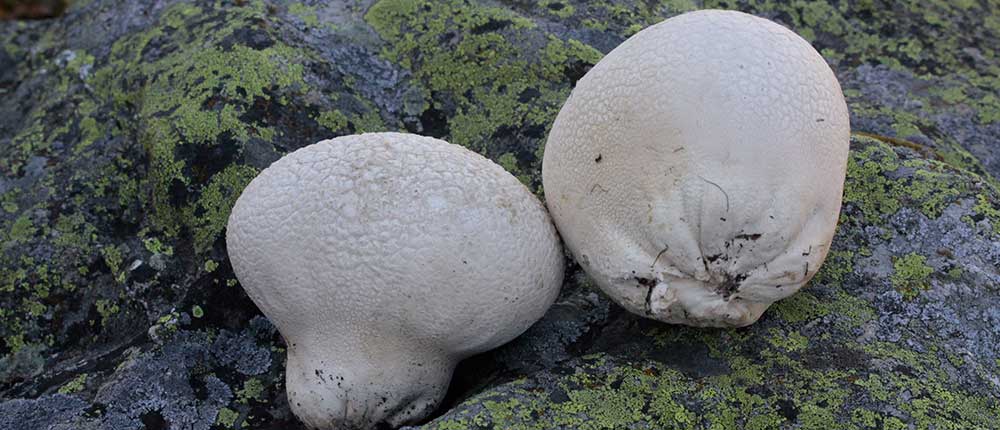
Field or meadow mushrooms (Agaricus campestris) growing in lawn and beds in colder regions bear a close resemblance to their cultivated brethren called button mushrooms (Agaricus biosporus). Meadow mushrooms along with horse mushrooms (Agaricus arvensis) are the most sought after edible species from the wild. A particular mushroom called yellow stainer (Agaricus xanthodermus), which is toxic, is often confused with meadow mushroom. The flesh or ball of yellow stainer bruises chrome yellow as opposed to the dingy reddish brown of the meadow one. Most of the lookalike mushrooms are identified by practising and mastering these petty differences with keen observation. Stressing on the need of patience and precaution while collecting mushrooms from the wild, Pradeep says smilingly, 'there are old mushroom hunters and also bold mushroom hunters but you can never find an old mushroom hunter who is also bold.' Field mushroom enhances secretion of insulin and is effective in treating ulcers, bed sores, scalds, and burns.
Judas'Ear, also known as jelly mushroom (Auricola judae) grows both on green and dead wood in hills and has the shape of a floppy ear. It is eaten fresh and also in dehydrated and powdery form. Not a very prized species though for culinary purposes, it is believed to be effective for treating sore throat and mouth ulcers.
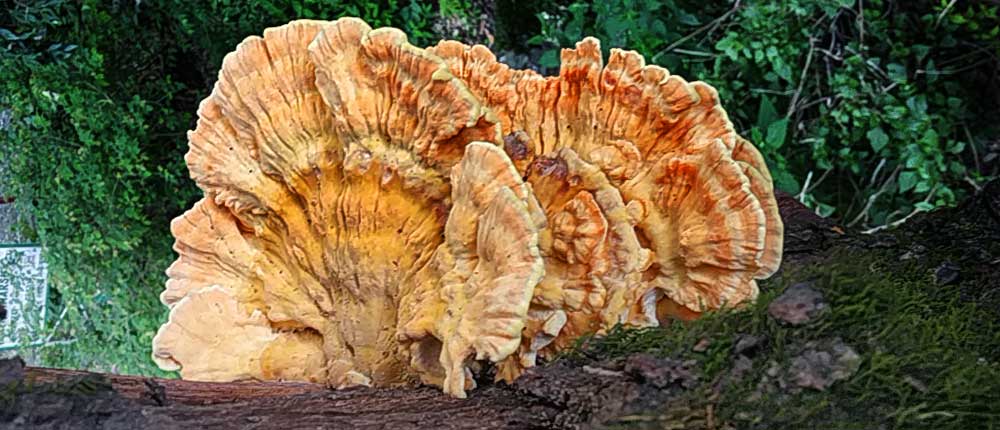
Penny bun mushroom (Boletus edulis) also grows in abundance in hills. It is the safest mushroom in the wild to be brought to the table and is the favourite of gourmets. Found commonly in deciduous and coniferous forests, it may grow up to 14 inches in diameter weighing over 3 kg. Low in fat and digestible carbohydrates and extremely rich in proteins it keeps its flavour after drying and unlike most of the mushrooms is eaten pickled also. Negro's head (Boletus aereus), pine tree cep (Boletus pinophilus),and summer cep (Boletus reticulatus) are a few other sought-after species for culinary purposes.
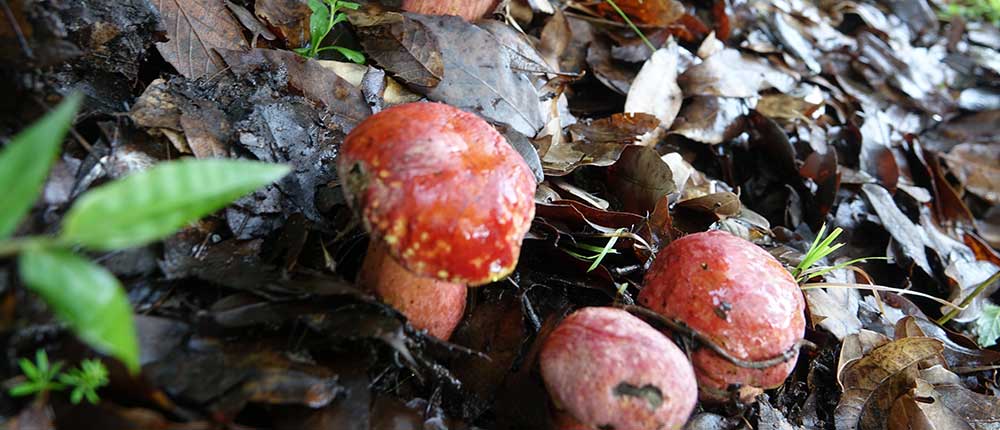
Lingzhi or reshi mushroom (Ganoderma lucidum) has the reputation of being a panacea. For over 2000 years it has been the most-cited medical mushroom capable of enhancing vitality, strengthening the cardiac function and also quite effective as an anti-aging drug and memory booster. The ancient Chinese pharmacopoeia speaks of its benefits at length. In the Himalayan hills, it is commonly found growing on stumps of trees. Since it has a variety of industrial uses its cultivation has also been started. Lion's mane or bearded tooth mushroom (Hericium erinaceus) that grows on oak trees in the Himalayan hills is red listed in 13 countries due to poor germination. It can easily withstand cold and frost and almost all its species are edible. It helps in curing age-related mental decline, dementia, Alzheimer's disease, and also the brain fog.
Hen of the wood mushroom, also called sheep's head or Maitake (Grifola frondosa) is a perennial bracket mushroom. It is also adorned with the title 'king of mushrooms' because of its enormous size, at times exceeding over 40 kg in weight. Shiitaki or saw-tooth oak mushroom, also known as black forest mushroom (Lentinula edodes), does grow here on deadwood and deciduous forests. A few highly sought after mushrooms commonly found in and around Nainital-Bhimtal hills are chicken of wood, chanterelle, Caesar's mushroom, coral mushroom and also puff ball. Puff balls in the slightly higher altitude often grow to the size of an infant's head and are termed in the local dialect as 'phaskee-tumadi' meaning—a 'garrulous ball'. An emission of clouds of brown dust-like spores, when the mature fruit ball bursts or is impacted, must have been the reason behind this amusing nomenclature. Morel or yellow morel (Morchella esculenta), pearl oyster (Pleurotus ostreatus), hoof fungus (Fomes fomentarius), turkey tail mushroom (Trametes versicolour), saffron milk cap or red pine mushroom (Lactarius deliciosus) are a few other species growing here in the wild. Some of these species are cultivable also. In a handful of the higher Himalayan pockets these are collected by the local pastoralists during the grazing season however, a large chunk of this great gift of nature to the Central Himalayas remains unutilized.
Paul Stamets, an American mycologist describes mushrooms as miniature pharmaceutical factories. Medha Pande, a Delhi-based writer and a mushroom enthusiast once informed me that how in the civil war torn Syria, where 6.5 million people have been food insecure, refugees in the camps in the north-west province of Idlib survived on oyster mushrooms grown in the dingy chambers. Interestingly, never a part of the Syrian cuisine mushrooms have now become there a widely accepted substitute of mutton and chicken. Indeed, for the nutritional value it has, this bounty of nature in the Central Himalayan hills should better have been the chief occupier of the larder. Vinod Pande suggests that in the hill stations such as Nainital mushroom hunting may be organized for young adventuring tourists by trained professionals. Surprisingly, even at the level of planning and governance the potential of mushrooms in the wild has never been thought of.
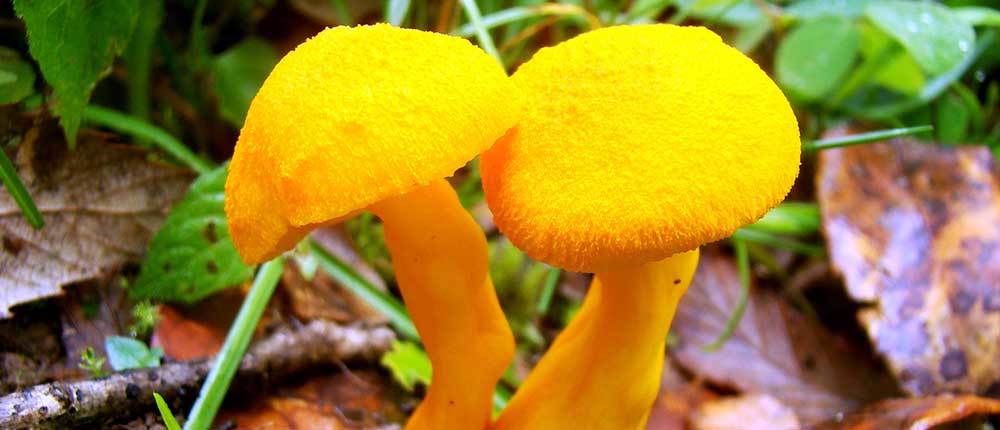
Besides their nutritional and pharmaceutical benefits, mushrooms have a remarkable ability to absorb carbon and regulate atmospheric carbon dioxide. Ninety-five per cent of terrestrial biomass produced by the living and dead plants tissues is exploited by the fungi. Researches state that 50–70 per cent of carbon stored in boreal forest soil was derived from dead roots and associate fungi. Quite a few mushrooms such as those belonging to the genus Boletus make a mutualistic relationship (mycorrhizal associations) with the roots of the plants. Mycorrhiza are the mushrooms which grow in association with the roots of a plant in a symbiotic relationship. They exchange nitrogen, phosphorus and other nutrients extracted from the environment for the fixed carbon from the host. Sharing his observations in Nainital and surrounding hills, Vinod Pande informed us that how mycorrhizae called Ericoid in mutualistic relationship with beautifully flowering trees and bushes such as rhododendron, azaleas, fetterbush and so many other plants of Ericaceae family have been sustaining them even in the nutrient poor and at times acidic soil where they normally grow. 'Don't you think that the use of controversial chemical fertilizers maybe reduced to a great extent if these wonderful symbionts are studied in depth?' He asks. Besides sustaining the flora in the jungles of hills a few parasitic mushrooms such as Armillaria (honey fungus), says Vinod, 'create cavities on the trunks of trees they grow upon; for birds, flying squirrels, honey bees and so many other creatures to take shelter.' Experts feel that rise in the temperature, which is expected to be to the tune of 1–5°C in the decades to come, will continue to be of greater magnitude in the hilly terrains. Changes in the fungal growth due to climate change will have considerable knock-on effects for ecosystem functions. In certain hilly terrains and also in many European and South American countries, the mushroom season is reported to have extended for many species to a considerable length since 1950. Extended rainy season, humid conditions, rise in temperature, etc., favouring the foliar growth and consequent input of dead vegetation must have been increasing the release of carbon dioxide. Though no such authentic data is available, yet it can safely be assumed that plant mutualistic fungi may be of help in counterbalancing this effect by storing carbon in the soil.
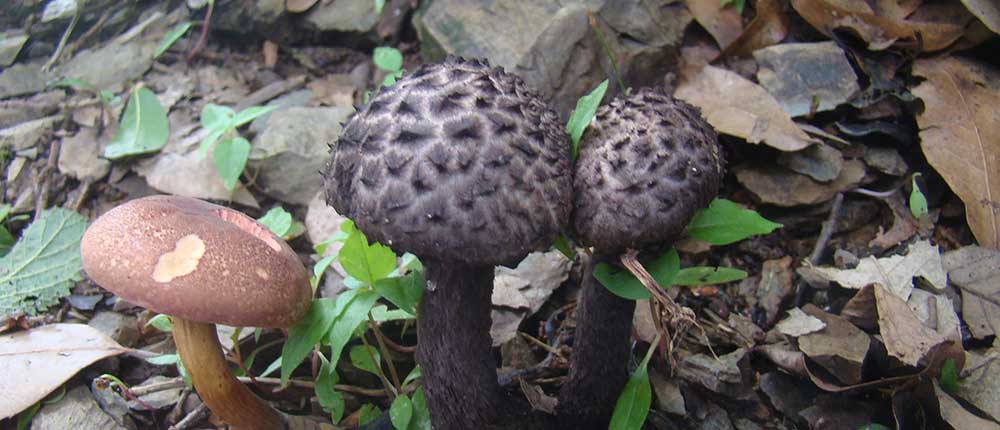
Mushroom undoubtedly may hold quite a few viable solutions to the world's most obdurate environmental issues. Just recently, Katy Ayers a student from Nebraska (US) built an eight feet canoe-like vessel out of the mycelium, that is, the dense fibrous roots of mushroom underneath the soil. Mycelium is buoyant and waterproof. Sarah Kuta, an American journalist and editor reports that Ayers' boat befittingly called 'myconoe' by her—'…ïs still alive, which means it fruits—grows mushrooms—each time they take it out for a paddle.' Katy refers to mushrooms 'as our biggest ally for helping the environment.' With their ability to break harmful pollutants and chemicals mushrooms can be used for everything from household insulations to furniture to packaging, replacing plastics, Styrofoam and other material that are hard to recycle. Ecovative, a New York-based biotech company has made headlines for its mushroom-based packaging material which, as reported by the NBC News, has been used by companies, such as Ikea and Dell. Mushrooms are also being used in certain countries to clean up toxic debris and contaminated soil. This process is called mycoremediation. Even in case of persistent organic pollutants such as Endosulfan, the use of which is prohibited in developed countries, the recalcitrant organic compounds are broken by fungi such as Botryosphaeria laricina and Aspergillus tamarii. Paul Stamets (American mycologist) in 2008 TED talks spoke of an experiment where petroleum waste spill was absorbed by the mycelium, spores, and sprouted oyster mushrooms. The State of the World's Fungi 2018 report reveals that a mushroom called Aspergillus tubingensis has the ability to grow directly on the surface of plastic deteriorating it. Pestalotiopsis microspora, does not only consume polyurethane but doesn't even need oxygen to grow. It has tremendous potential for feeding on the landfills and clearing them.
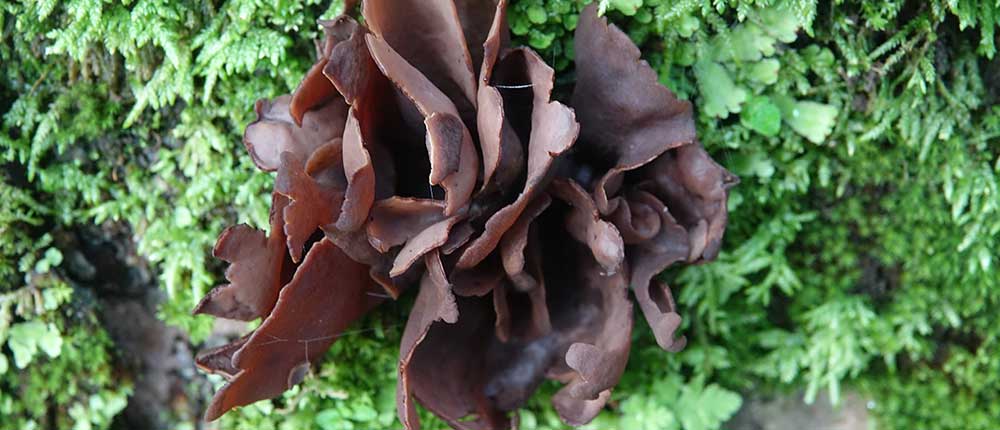
Fast Company, the world's progressive business media brand states that buildings and by association the construction contributes 39 per cent of the world's carbon footprints. Energy used to heat, cool and light buildings accounts for 28 per cent of these emissions. Cement alone has the share of 8 per cent in global CO2 emission. The construction industry has already started joining the transition towards the use of alternative materials. Mycelium has turned out to be a great building material. A New York-based architectural firm by the name 'The Living' has designed an organic mycelium tower known as 'Hi-Fi' in midtown Manhattan. Cultured fungus grown in the shape of brick-shaped moulds has been used in it. MycoTree, a spatial branching structure made out of load-bearing mycelium components, as the centrepiece for the 'Beyond Mining – Urban Growth' exhibition at the Seoul Biennale of Architecture and Urbanism 2017 in Seoul, Korea, also deserve mention here. Grown on agricultural waste, mycelium creates bonding with the surface of this waste, acting as a natural self-assembling glue. 'This entire process' reports Fast Company, 'uses biological growth rather than expensive, energy intensive manufacturing process.'
Amid the hubris of our technological advancement, I often feel, what we have missed is the fact that if small and seemingly insignificant things are given due importance the bigger issues are bound to fall into the desired and most needed lines. Thomas Carlyle has said once, 'Thou fool! Nature alone is antique, and the oldest art a mushroom; the idle crag thou sittest on is six thousand years of age.'—Isn't it a fact that we haven't yet grown big enough to realize the benevolence of nature that has long been arming us to the teeth against all odds?
This article was first published in the online magazine TerraGreen.
Rajshekhar Pant is an amateur filmmaker, a photographer, and a writer, who has written over a thousand write-ups, reports, etc., published in the leading newspapers and magazines of the country. Pictures Courtesy: Vinod Pande and Pradeep Pande.
